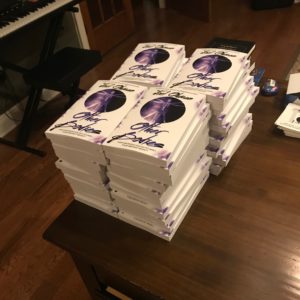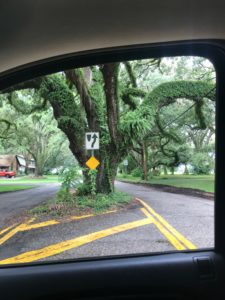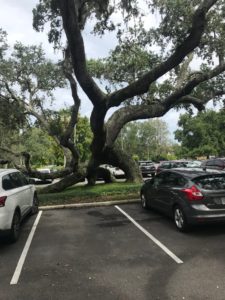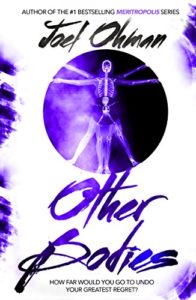

The story of the world begins in a garden and ends in a city. From Garden of Eden to New Jerusalem we find ourselves in this epoch of “in-between-ness”, seemingly tugged simultaneously in two quite different visions of the good life and the ideal world—garden and city—and yet, these visions are one and the same. Garden and city are not opposites, but complements; each showcasing particularly multivarious facets of a good Creator who creates good things for His glory and the good of His creation. As garden, it was all good in the beginning, and as garden plus city, it will be all good in the end too.
As someone who works with their mind for a living—writing books, starting and running software and digital media companies—I am struck sometimes, even often, by a palpable desire for the physicality of a thing; I want to touch and handle, see and create a thing, something, anything that takes up space, that exists in a place.
The book I’m currently reading that accurately describes both the advantages and disadvantages of working, living, and starting businesses in this “Intangible Economy”: Capitalism Without Capital: The Rise of the Intangible Economy
It’s an amazing, awesome, (and fun!) thing to be able to take the thoughts in your head and translate them, via strokes on a keyboard, into words on a screen or lines of computer code in a website, and then ultimately, into money in a bank account (if the idea is any good!), but the abstracting away of thought from thing, of the concept from the concrete, can also bring its own special set of challenges, not least for someone like me who tends to live in their own head all the time.

Signing paperback copies of my book is usually the first sense of having created “a thing”, and not just an abstract story or idea.
It’s no secret that most people, maybe all people, find in themselves a need to “do something with their hands”. This is true even for non-handy people like me (lifting weights, cooking, and martial arts all fill that need for me in a way that remodeling a bathroom just doesn’t do) and years of doing solely “knowledge work” has only increased this need.
So why all this talk of working with your hands and tangible vs intangible goods and place and location—what does any of this have to do with the story of the garden and the city?
Well, if we aren’t careful we can over-intellectualize and over-conceptualize the Bible, and all that we read therein, and make the stories simply that, stories, and not truths from God that accurately describe some type of past, present, or future spiritual, and yes, physical reality. Call it neo-Gnosticism, call it history repeating itself, call it the timeless condition of man, but why is it that when we read the overarching meta-narrative story of garden to city, we tend to read it like a fairy tale? And yes, hold that thought, my good atheist reader friends, I see those hands shooting up; I have something for you in a moment—I would argue it’s not because it’s actually a fairy tale, but because, though we are all wired for story, we have difficulty connecting our story to our place in God’s story. The solution, of course, being the good news of Jesus Christ, doing for us what we could not do for ourselves and joining fallen man to rightful union with God and His grand story.
Okay, my atheist friends, now for you—notice how I cleverly made you read through that entire last paragraph? I think I know what you are jumping up and down with upraised hands and ready to ask: “But how do you know it’s not just a big fairy tale?”
Fair question.
But why does something leap and soar inside of you when you hear these types of fairy tales?
“But wanting something to be true does not make it true!!!”
You are right. But why, why do we all want it to be true, sometimes so badly and so deeply that it’s difficult to even put into words?
What separates “fairy tales” from just “tales”? Why do the good ones resonate with so many of us, spanning across ages and cultures and time itself? Maybe it’s the magic, the longing, the otherwordliness, even if just a hint of it. Maybe… the connection to our desired end, to something true that it says about the way all of us are made on the inside, whether we admit it or not.
So why? Why are we all like that? And if so, what does it say about us and the world around us? Can it really be just survival value that we all collectively both believe in the power of these stories and want them to be true?
What if the story were real, and true, and so deeply important that you can just feel it, right now. What if…
Would you want to join it?
NOTES:
A) The header picture above is from Forsyth Park in Savannah, GA—Savannah being one of the most perfect displays of city planning in the US, with an almost seamless blending of all the best of both garden and city. Recommended: take a horse-drawn carriage ride over the cobblestones and throughout the city.
B) I hope I’ve made it clear that I am not advocating for or against city or garden at the expense of the other, but for a both/and approach that appreciates the beauties and benefits of each, working and blending together in harmony. I clarify this only because this “one or the other” line of thinking is most commonly seen with a Nature Fallacy/Appeal to Nature type of argument where what is “natural” is presented as de facto superior to what is considered “unnatural”. However, if the initial proclamation of “good” by God in the garden, followed by the Cultural Mandate, and subsequent culmination of the story in a grand city also proclaimed “good” is allowed to be our guide, then we have proper basis for esteeming both garden and city alike.
C) Speaking of the blending of garden and city, especially in the context of city planning, I’m unable to “not notice” little instances of this type of blending done right. Here’s some I encounter on a daily basis:

Roads done right…

Parking lots done right.
D) Last thing, and maybe I’ll say more about this in a future post, but if you want to read a fascinating account of how trees communicate, work together, and ultimately have secret lives of which we are only now beginning to understand just a little, then you’ll love this book:
The Hidden Life of Trees: What They Feel, How They Communicate, Discoveries from a Secret World – Peter Wohlleben











